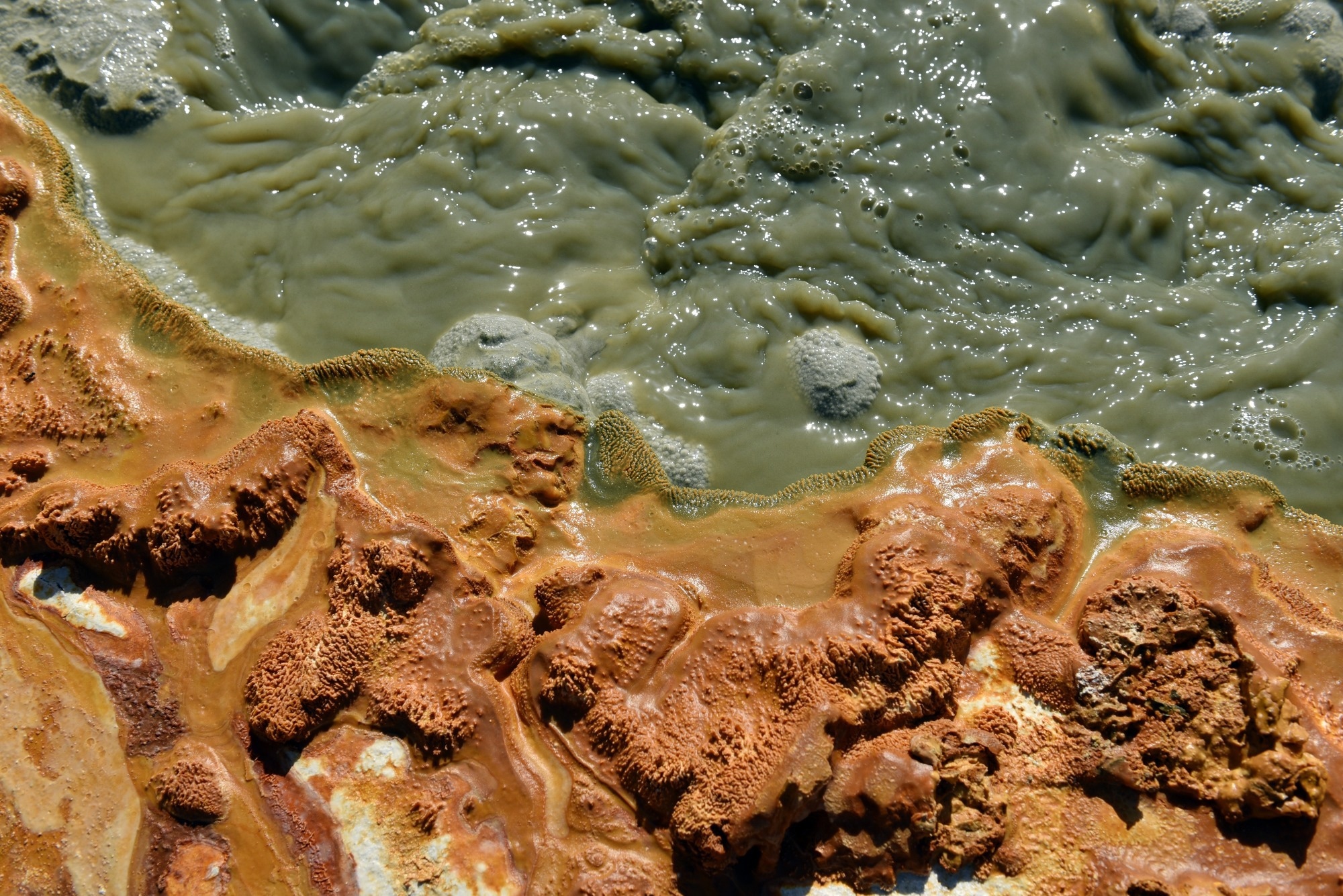While concerns about the persistence of nanomaterials in the environment remain valid, emerging research points to their utility in remediation. Whether capturing microplastics or stabilizing heavy metals in soil, nanotechnology is being reimagined as a tool for ecological recovery.
 Image Credit: Rneaw/Shutterstock.com
Image Credit: Rneaw/Shutterstock.com
When you hear the word nano, what do you think of? Nanoplastic particles? Graphene? Is the nanoscale revolutionizing technology, or producing pollutants too small to manage? Search engine results are unclear. But science isn't.
The latest nanoscience is addressing, rather than causing, environmental challenges. Here, we explore how.
Get all the details: Grab your PDF now.
Microplastics and their Nano Solutions
Micro- and nanoplastics are a serious concern for ecosystems and living organisms. These tiny plastic particles can be ingested by species on land and at sea, taken up through plant roots, or eaten by whales as krill seasoning.
Once inside organisms, they can cause physical blockages, tissue inflammation, and oxidative stress, disrupting everything from feeding to reproduction. Often smaller than cells, nanoplastics can penetrate tissues and even cross biological barriers, which scientists believe is affecting growth and metabolism at the molecular level. As a result, these particles threaten to topple overall biodiversity and the ecological balance.1
A recent study in ACS Nano explored the use of iron oxide nanoparticles (nano-Fe2O4) to tackle this problem head-on. The researchers investigated how these nanoparticles interact with plastic particles and the surrounding biological environment, including soil and plant systems.2
They found that nano-Fe3O4 can influence the aggregation and surface properties of microplastics and reduce their mobility and potential toxicity. Moreover, these nanoparticles altered microbial community structures in ways that helped lessen the harmful effects of plastics on plant growth.
The study shows how engineered nanomaterials can serve as remediation agents that capture or neutralize pollutants and simultaneously improve ecological resilience to plastic contamination.2
Cleaning Contaminated Water
Water is vital to all aspects of life on Earth. However, access to clean and hygienic water is becoming more and more challenging as micro- and nanomaterials continue to pollute both fresh and marine bodies.
In a 2024 study, researchers developed a CTAB-modified magnetic biochar composite to remove nanoplastics from contaminated water. The team synthesized biochar from agricultural waste and modified it with cetyltrimethylammonium bromide (CTAB) and magnetic nanoparticles to enhance its adsorption capacity and recyclability.3
When the researchers tested this composite against polystyrene (PS) and carboxylated polystyrene (PS-COOH) nanoparticles, it achieved high removal efficiencies through the strong electrostatic and hydrophobic interactions between the nanoplastics and the modified biochar surface. 3
The modified biochar is even more desirable for remediation as its magnetic properties allow for easy separation and reuse without significant loss in performance over multiple cycles. This surface modification method creates sustainable, low-cost, and reusable materials for tackling the problem of nanoplastic pollution in aquatic environments. 3
A similar study in 2024 explored how magnetic nanotechnology can be used to remove micro- and nanoplastics from water systems. The researchers developed and tested magnetic composite materials that could bind to plastic particles ranging from around 100 nm to 100 µm in size.4
The researchers analyzed the interactions between magnetic particles and various plastic types, identifying key parameters such as particle size, surface chemistry, and magnetic field strength that influence removal efficiency.
Their results showed that magnetic capture methods could effectively separate plastic contaminants across a wide size range. This ability could be a scalable and energy-efficient solution for cleaning polluted water. 4
Interested in the toxicological impact of nanoparticles? Click here!
Nanoscience Remediates Heavy Metal-Contaminated Soils
But water isn't the only resource at risk. Soil, whether through industrial processes or otherwise, is increasingly contaminated with toxic heavy metals. Nanotechnology could provide an answer to this problem, too.
 Image Credit: salajean/Shutterstock.com
Image Credit: salajean/Shutterstock.com
A 2025 study published in Science revealed that approximately 14 to 17 % of the world’s croplands are polluted by heavy metals such as arsenic (As) and cadmium (Cd). This contamination threatens soil fertility and food safety, with an estimated 0.9 to 1.4 billion people living in affected regions.5
Recent research by Ainiwaer et al. explored how sulfidated nano-zero-valent iron (S-nZVI) could be used to remediate heavy metal-contaminated soils. The researchers combined S-nZVI with sewage sludge to treat soils that were co-contaminated with arsenic (As) and cadmium (Cd).6
The study showed that the nano-iron particles effectively immobilized these metals by transforming them into less mobile and less bioavailable forms. The particles immobilized the heavy metals through redox reactions and surface complexation, enhanced by the sulfur modification, which improved particle stability and reactivity in soil environments. 6
The study demonstrated the effectiveness of the co-application of S-nZVI, revealing the particles not only reduced the leaching potential of As and Cd but also improved soils physicochemical properties.6
Future Prospects
Nanotechnology’s environmental reputation is rarely positive, but this growing body of research is reframing it as a tool for remediation. Scientists are now using engineered nanomaterials to mitigate pollution, capturing micro- and nanoplastics in water and immobilizing toxic metals in agricultural soils to carry out ecological repair.
References and Further Reading
- Theodore, L., & Kunz, R. G. (2005). Nanotechnology: Environmental implications and solutions. John Wiley & Sons. https://books.google.com/books?hl=en&lr=&id=CD1vRAyl-3UC&oi=fnd&pg=PR7&dq=nanotechnology+destroying+environment&ots=gqRAlHRtxb&sig=G0wWE0m_wzlhsioD59-z7eoT_pY
- Liu, D., Iqbal, S., Gui, H., Xu, J., An, S., & Xing, B. (2023). Nano-iron oxide (Fe3O4) mitigates the effects of microplastics on a ryegrass soil–microbe–plant system. ACS nano. https://pubs.acs.org/doi/abs/10.1021/acsnano.3c05809
- Parashar, N., & Hait, S. (2024). Enhanced microplastics removal from sewage effluents via CTAB-modified magnetic biochar: Efficacy and environmental impact. Journal of Cleaner Production. https://www.sciencedirect.com/science/article/pii/S0959652624030555?casa_token=TlW0e_VjX-IAAAAA:IMtsRELjMteOIot2jqj-SofFPaP9U8xCx-iCd21Tz-P1UMnIHnLBBXEGcb21p3RIso44R8q-TGVe
- Gaß, H., Kloos, T. M., Höfling, A., Müller, L., Rockmann, L., Schubert, D. W., & Halik, M. (2024). Magnetic Removal of Micro-and Nanoplastics from Water - from 100 nm to 100 µm Debris Size. Small. https://doi.org/10.1002/smll.202305467
- Hou, D., et al., (2025). Global soil pollution by toxic metals threatens agriculture and human health. Science. https://doi.org/10.1126/science.adr5214
- Ainiwaer, M., et al., (2024). Effective co-immobilization of arsenic and cadmium in contaminated soil by sepiolite-modified nano-zero-valent iron and its impact on the soil bacterial community. Scientific Reports. https://doi.org/10.1038/s41598-024-77066-6
Disclaimer: The views expressed here are those of the author expressed in their private capacity and do not necessarily represent the views of AZoM.com Limited T/A AZoNetwork the owner and operator of this website. This disclaimer forms part of the Terms and conditions of use of this website.